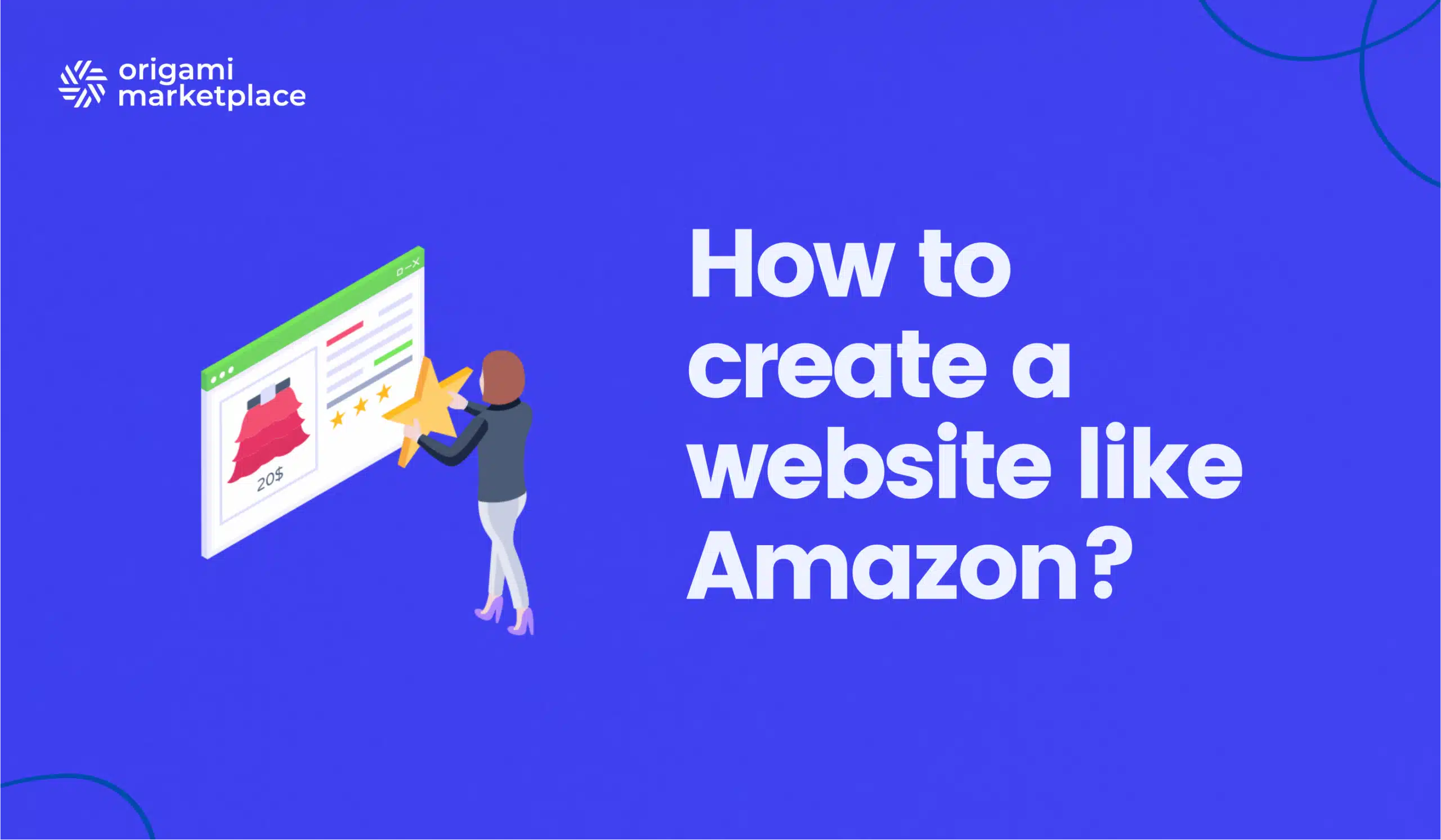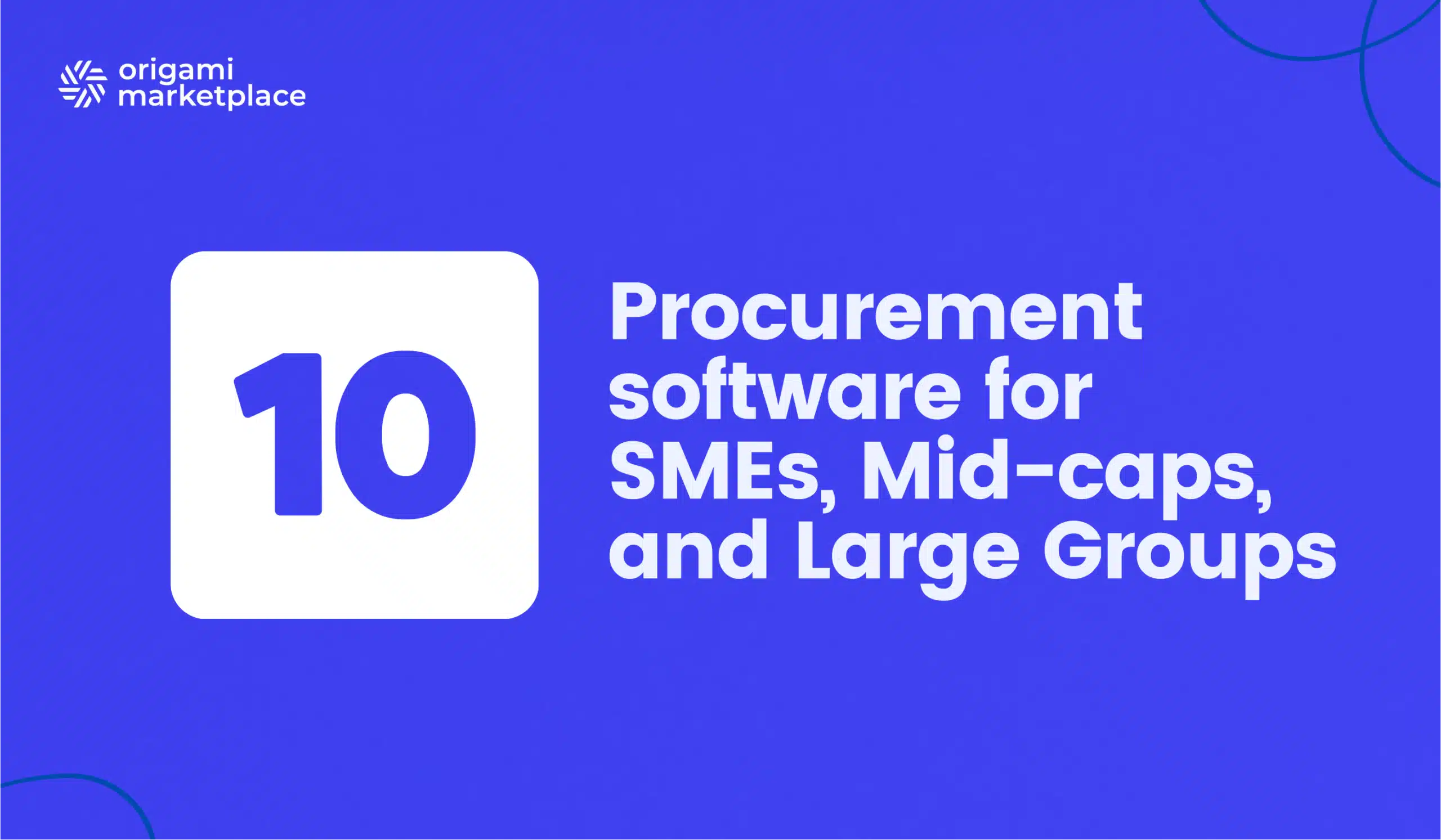How to create a website like Amazon? The complete guide
- Arnaud
- 8 minutes reading

You dream of creating a large-scale marketplace, like Amazon? You are in the right place! Amazon, the e-commerce giant, ranked the 2nd largest company in the world in terms of revenue and the 6th most profitable, has seen its sales jump by nearly $320 billion in four years, and forecasts predict continued growth. Faced with such a success story, the idea of launching a similar site becomes more than just an ambition – it’s a real opportunity.
However, such a project requires a deep understanding of a marketplace’s features, rigorous planning, effective execution, and a formidable marketing strategy! From managing products, payments, and deliveries, to integrating cutting-edge technologies to optimize the user experience, each step is crucial.
Whether you are a retailer looking to expand your offerings or a brand seeking new trends, this guide is for you. We will explore the reasons behind Amazon’s popularity, the advantages of creating your own marketplace, the steps to make your site similar to Amazon, the associated costs, and potential challenges. By equipping yourself with the right solution and the proper expertise, creating a marketplace inspired by Amazon can turn into a real success story. Let’s dive together into Amazon’s universe and discover how to turn your idea into an entrepreneurial reality!
👋 No time to read the whole article? Find the summary here.
1. Why is a website like Amazon so attractive to sellers and buyers?
The phenomenal success of Amazon is based on a multitude of factors, ranging from constant technological innovation to impeccable customer service, including a diversified range of products, competitive prices, and fast and reliable delivery.
The famous marketplace has managed to gain the trust of consumers thanks to its solid reputation in online transaction security and its aggressive and personalized marketing strategy. From its inception, Amazon has relied on four fundamental principles: customer obsession, welcoming innovative ideas, continuous improvement of operations, and forward-looking planning. By focusing on customer obsession rather than competitor analysis, Amazon has been able to create a privileged relationship with its users, who have responded by enthusiastically adopting the platform.
The user experience on Amazon is also a key element of its success. The site’s vibrant and user-friendly design, characterized by an attractive color palette, rotating banners, easy navigation, and numerous sorting and filtering options, offers buyers an enjoyable and intuitive browsing experience. Informative product pages and simple checkout processes also contribute to the positive user experience.
Amazon also stands out for its flexibility in returns, refunds, and payments. Return and refund policies tailored to customer needs, combined with a variety of secure payment options, strengthen trust and loyalty towards the brand. Security and protection are at the heart of Amazon’s concerns. Thanks to the security of the AWS cloud, the platform continuously monitors activities and protects the data shared by buyers and sellers. Amazon’s transparent and simple policies, without hidden terms and conditions or additional costs, have reinforced its reliability and allowed sellers to run profitable businesses and buyers to obtain what they desire.
Finally, the cutting-edge technology used by Amazon, including MySQL, DynamoDB, HTML, CSS, JS, augmented reality, and artificial intelligence has significantly improved the user experience. These technologies enable smooth navigation, virtual product trials, and personalized recommendations, thus encouraging users to return to Amazon and ensuring conversions. Solutions such as Adobe Commerce, designed to offer remarkable experiences in a robust technological environment, are also an asset to the platform.
In summary, the combination of innovation, customer obsession, attractive design, flexible and transparent policies, and the use of advanced technologies has made Amazon a reference in the field of e-commerce and a success model for marketplace operators.
2. How does Amazon generate revenue?
The Amazon business model is primarily centered around the online sale of products to end consumers. The majority of the marketplace’s revenue comes from direct sales to consumers, commissions earned on sales from other sellers on its platform, as well as additional services such as premium delivery with Amazon Prime and cloud services via AWS. In addition to these main sources, Amazon has diversified its revenue streams by venturing into online advertising, financial services, and technology with products like connected speakers and voice assistants. The ultimate goal of Amazon’s business model is to maximize revenue by leveraging various sales and service channels while constantly innovating in the technological domain.
- Amazon Marketplace: More than 50% of revenue comes from commissions on sales from third-party sellers.
- Amazon Prime: With over 150 million members, this subscription service offers fast delivery, video streaming, photo storage, e-books, and more.
- Amazon Web Services (AWS): Although not the main source of revenue, AWS is one of the most profitable branches.
- Amazon Kindle: This service drives traffic to Prime and allows independent authors to publish their works.
- Amazon-related Patents: Over 1,000 patents, several of which are licensed to other companies.
- Amazon Advertising: A marketing channel targeting a purchase-ready audience.
In summary, thanks to a diversified and innovative strategy, Amazon has managed to create a robust and efficient business model that continues to dominate the online commerce market. We will discuss later in the article how you can develop other complementary revenue streams to commissions on your own marketplace.
Ready to turn your B2B, B2C, or C2C marketplace vision into reality?
To help you develop the best platform possible, we’ve gathered all the must-have features, key technical considerations, and best practices in a comprehensive document:
Download the Specifications template 🗒
Perfect for smaller or medium-scale projects without a formal purchasing process. It will help you outline your requirements effectively and streamline your selection process.
Download the Request for Proposal template 📒
Ideal for larger, more complex marketplace projects with a formal purchasing department or advanced procurement policies.
3. Why is it wise to create a marketplace like Amazon’s?
As time progresses, consumer expectations regarding marketplaces are evolving. Consumers now aspire to platforms that meet all their needs, favoring global marketplaces over vertical or horizontal ones.
Websites such as Amazon, Cdiscount, Rakuten, or eBay have excellently met these expectations. To put it into perspective, nearly 48% of consumers make their purchases on these platforms, making sites like Amazon extremely profitable.
According to the latest data, Amazon’s net revenue grew by 22% compared to 2020, closing 2021 at $469.8 billion, despite significant disruptions in the global supply chain. In 2022, marketplaces such as Taobao, with a GMV of $701 billion, Tmall, with a GMV of $663 billion, and Amazon, with a GMV of $368 billion, demonstrated the scale and profitability of the online marketplace sector.
Other platforms like Rakuten, Etsy, and Vinted also recorded significant growth. The reason is simple: these platforms directly address the needs of end users, the consumers. At the same time, they prove lucrative for merchants, who benefit from the visibility offered by an already popular platform. It is therefore undeniable that the marketplace is the model to adopt if you want to launch a new e-commerce business today. We will explain just below how to proceed to create one like Amazon!
4. How to create a website like Amazon?
We have prepared below a comprehensive, step-by-step guide for you to create a multi-vendor platform similar to Amazon. To successfully develop such a marketplace, follow the 8 steps below:
Step 1: Identify your market, products, and target audience
To launch a marketplace akin to Amazon, it is essential to determine which products you want to sell, which customers you want to target, and in which market. A thorough market analysis will highlight current trends, challenges, threats, and opportunities for your business. Our advice: always prioritize a niche market like Biked or Green Musicians; your success will be even greater!
Step 2: Choose a domain name and a SaaS solution for your marketplace
After defining the products to sell and identifying your market and target audience, it’s time to reserve a domain name. It should be both easy for your visitors to remember and unique to distinguish yourself in the market.
The next step is to choose a SaaS solution or an agency that will help you technically develop your multi-vendor platform. Currently, a large portion of marketplace traffic is generated by mobile devices.
Therefore, it is essential that your marketplace is user-friendly and optimized for mobile. Origami Marketplace can be a wise choice. Our solution has been designed and coded to adapt to all business sectors thanks to an evolving structure, custom-made and scalable. Whatever your project or sector (B2C, B2B, C2C, or C2B2C), our solution allows unlimited customizations for your marketplace and meets current security standards.
Step 3: Work on the design and ergonomics of your marketplace
Amazon’s excellence in the marketplace sector is largely attributed to its remarkable UX/UI. To compete or draw inspiration from it, it is crucial to meticulously choose the design of your marketplace. Ensure that the color palette is balanced, neither too bright nor too dull, and most importantly, that the theme and design faithfully reflect your brand image. Then proceed with the careful organization of all your pages:
First, to create a site comparable to Amazon, the primary element lies in implementing a simplified and fast search function. This is crucial for effectively highlighting the most sought-after products by customers and showcasing the various available categories, thus encouraging potential buyers to explore your product range further. Amazon excels in this strategy by constantly optimizing its search engine to anticipate user needs, offering relevant suggestions, and personalizing the shopping experience, all with the ultimate goal of maximizing customer satisfaction and boosting sales.
The homepage must be logically, compactly, and attractively structured. It is essential that your products tell a story—the story of your marketplace—to create a connection with visitors. Merchandising also plays a crucial role; the buyer should be able to perceive within seconds what your marketplace can offer compared to other sites. This involves highlighting the added value and uniqueness of your platform to capture attention and encourage browsing and purchases.
Finally, listing pages must be clear, offering a multitude of filtering and sorting options for intuitive navigation. It is imperative that product pages are rich in information, structured with distinct sections for ratings and reviews, to provide a comprehensive and transparent understanding of the product. This clarity and richness in information are essential to build trust and guide potential consumers in their purchasing process, ensure satisfaction, encourage transactions, and retain this new clientele.
Rest assured, Origami Marketplace offers all these essential features, allowing buyers to search for and order any product at any time, even purchasing from multiple vendors, without any hassle.
Step 4: Enhance features for buyers
When choosing your marketplace editor, it is important to look at the features offered for buyers. Design alone will not make your marketplace as attractive as Amazon; some features are indispensable, such as:
- Simplified registration (e.g., social media login)
- Simplified payment (1-2 steps)
- Multi-vendor cart
- A ‘My Account’ page with a complete order history
- A system of smart notifications or automated emails
- Display of previously purchased products
- Highlighting best-selling and recommended products
- Favorites
- Order tracking
- Choice of delivery method
- Reviews
These features are absolute priorities to ensure a user experience comparable to that of Amazon.
Step 5: Nurture your sellers and facilitate their integration
A marketplace like Amazon serves as an intermediary between buyers and sellers. It generates the majority of its revenue by taking commissions on sales made by its sellers. Therefore, it is essential not to neglect the features intended for sellers, which they must have access to from a dedicated back-office: simplified product listing, bulk importing, intelligent category suggestions, a clean dashboard that provides key information on their sales, etc.
In summary, the more features your marketplace offers to sellers, the more inclined they will be to sell on your platform, thereby contributing to the success of your marketplace.
The SaaS model is perfect for creating your marketplace and quickly testing your idea. To ensure you make the best choice, we have prepared a comparative guide with other possible solutions!

Antoine Mantel
→ Talk to our marketplace expert.
Step 6: Consider yourself, the operator of this marketplace
After taking into account sellers and buyers, it is time to focus on the essential features for the overall management of your marketplace that you will use daily. Although you can integrate a multitude of features, some are indispensable, and if your marketplace editor does not offer them, flee!
- Seller management
- Simplified and automated seller payments management
- Commission calculation tools
- Technical partners management
- Product control and approval
- Detailed transaction reports
- Tax calculation
- Tax compliance tool
- Advanced shipping management
- Refund management
- Analytical tools
- Creation of categories and attributes
- Support for sellers and/or nuyers
These features will allow you to maintain optimal control over the marketplace and manage it efficiently. By optimizing management, you also ensure the sustainability and success of your marketplace.
Step 7: Select the right partners (Delivery, Customer Service & Payment)
To successfully create a marketplace like Amazon, delivery options and payment options are crucial for all stakeholders. Thus, establish partnerships with reliable delivery and payment providers. If you plan to enter international trade, be aware of potential supply chain issues you might face.
It is also important to partner with the right provider for the tripartite management of customer relations. To learn more about ideal partners, visit this page.
Step 8: Prepare the launch and promotion of your marketplace
The final step in creating a marketplace is its launch and promotion. At this stage, it is crucial to identify the appropriate media to present your platform and attract a large audience from the beginning. Before launching, also ensure that your site complies with current standards. Once everything is in order, you can move on to the promotion phase.
You can leverage social media, influencer marketing, display ads, or video. Set a budget and strive not to exceed it. Rest assured, the cost of launching a marketplace may seem significant initially, but virality and word of mouth will considerably limit this expense over time. If you have doubts, do not hesitate to call on marketing professionals to obtain expert advice and optimize your strategy. These steps will help boost your initial online sales and attract new sellers. Of course, if you choose a solution like Origami Marketplace. Our team will be on hand to support you.
Ready to become the next Amazon in your sector?
Numerous online marketplaces, each within their specialized domain or niche, have drawn inspiration from Amazon’s model. All of them, despite their unique strengths and challenges, share the objective of providing consumers with convenient and reliable access to a diverse range of products. If the idea of creating an Amazon-like site still appeals to you, it is crucial to understand that developing such a marketplace is a complex endeavor. It requires careful planning, in-depth expertise, and a clever marketing strategy to achieve your ambitions.
Opting for the services of a marketplace provider, such as Origami Marketplace, could be a wise move to optimize your time and financial resources. If you are ready to embark on this adventure, feel free to have a free discussion with one of our experts. They will listen to your project, provide you with advice, and you will remain free to entrust us, or not, with the realization of your platform.
Quick summary - How to create a website like Amazon?
Why is a website like Amazon attractive?
- Technological innovation, a vast product range, competitive pricing, fast delivery, and flexible customer policies.
- Optimized user experience: intuitive navigation, personalized recommendations, enhanced security.
How does Amazon generate revenue?
- Direct sales, third-party seller commissions, Amazon Prime, AWS, advertising, Kindle, and patents.
Why create a marketplace?
- Growing market demand, attractive for consumers, and profitable for sellers.
How to create a marketplace?
- Identify your market, products, and target audience.
- Choose a domain name and a SaaS solution.
- Focus on UX/UI with user-friendly design and navigation.
- Include essential features (multi-vendor cart, notifications, order tracking).
- Support seller integration with easy-to-use tools.
- Manage your platform effectively with tailored operational tools.
- Partner with reliable providers for delivery, payment, and customer support.
- Plan the launch and promote your marketplace strategically.


